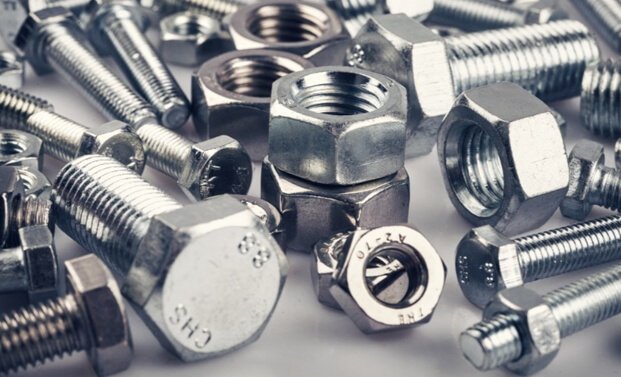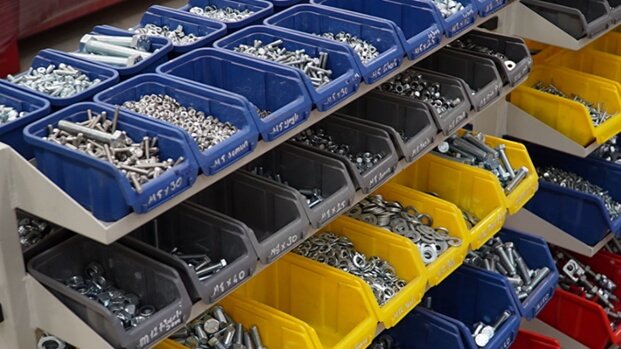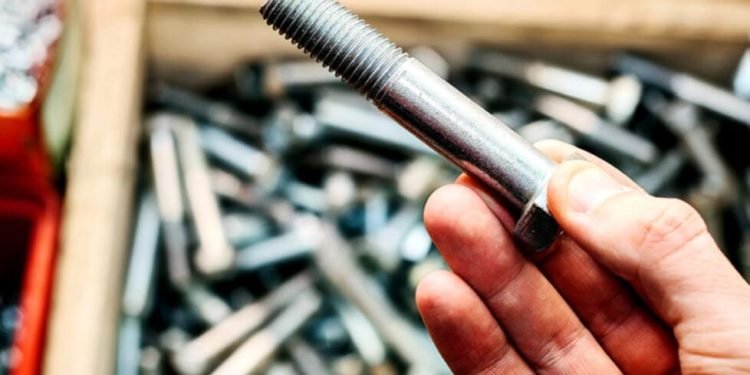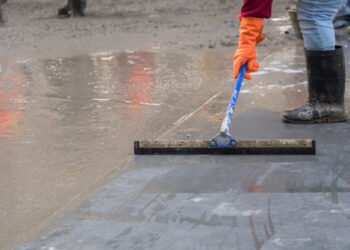Fasteners are those crucial items connecting two or more workpieces in a permanent or temporary bond. You can see them in everyday objects like furniture and electrical appliances, as well as in industrial uses in construction sites and machinery production.
They come in many designs, types, sizes, and materials to ensure a secure fixture. Choosing the right option, though, may be complicated, considering all the variables at play and where and how they’re used.
What Is a Fastener?

The broad definition is any device that can mechanically join two or more pieces together. The joint created by a fastener can be permanent or temporary, meaning you can remove it when the need arises.
The distinction implies there are permanent fasteners, such as nails and rivets, and non-permanent fasteners, of which bolts and screws are the more common types.
The aim of any option is simple: to hold different parts, components, and workpieces while subjected to different forces, such as mechanical stress, vibrations, and heat. Choosing the right fasteners means you should have a basic knowledge of what each is capable of and where it’s used.
Types to Choose From
The distinction between permanent and non-permanent options also roughly coincides with threaded and non-threaded types. The threaded type is one with an integral groove or thread, either partial or along the whole length.
This helps simplify installation, as well as create a secure connection. It also makes removing the fastener easier. Typical examples here are the countless types of bolts and screws. These can be used on their own or with nuts and washers.
On the other hand, non-threaded types, like nails, are preferred when the joint needs to be secured, and there is no need to remove them once installed. These also require more effort to take out and can damage the materials and items they connect.
Bolts
This is a non-permanent and threaded option, often used where there is the need for substantial strength due to the higher loads acting on the pieces that are to be connected.
Unlike screws, bolts don’t create a thread in the material. They come in different shapes, sizes, and head types and can be partially or fully threaded. This leads to several major types:
Hex bolts
These are some of the more widespread bolts around and have a hexagonal head, making them easy to use with sockets and wrenches. The thread can run along the whole length of the shank or partially if the materials and connection are subjected to higher shear loads.
Hex bolts are used in both home repairs and larger pieces of equipment and machinery, as well as in heavy-duty applications such as large-scale construction projects. Nuts and washers are used where even weight distribution is a concern. Hex bolts have largely replaced square-head bolts. These can still be seen in structural elements in older buildings.
Carriage bolts
When fastening wood and metal, you’ll often come across carriage bolts. These have smooth, rounded heads that prevent the bolt from turning when installed. Usually, they have an unthreaded square section under the head to aid with fastening and securing heavier loads.
Anchor bolts
These are also called “cast-in-place” bolts and are used as a permanent fixtures when embedded in concrete and masonry. They are exceptionally tough and secure structural elements like columns and walls to foundations.
Eye bolts
Here the head is replaced with a loop or circular configuration in the shape of an eye. They are used in overhead applications such as tying ropes and chains to different surfaces. There are bolts with full or partial loops.
U-bolts
These have two threaded sections connected by a U-shaped arm. They’re usually used to support pipework against walls and beams, with the U shape keeping pipes (or other items) firmly in place.
Other types include flange bolts, with a preset flange acting like a washer and used in high-speed fastening, and plough bolts, with flat tapered heads designed to sit flush with the surface once installed.
The latter is often used in countersinking, especially in wood. And double-end bolts without heads, but threading at either end and smooth shanks in between. You can commonly find these in automotive parts and simple DIY projects, such as securing doors and gates.
Screws

Screws are another widespread type of threaded fastener. Unlike bolts, they create their thread into the materials or surface in which they’re installed.
In this sense, you’ll hear the terms self-threading and self-tapping screws. Another area where they differ from bolts is that they don’t use washers or nuts. Screws are often categorised by the materials they’re used in or by their design features. Some of the more familiar types are:
- Wood screws: these are used in all types of wood and have circular or hex heads, full or partial threading (with smooth shank sections), and pointed tips for easy installation.
- Machine screws join metal parts in machinery and machine components. They’re the closest to bolts, with the threading having the same diameter from bottom to top but being generally thinner than bolts. Some variants are also used with nuts and washers.
- Socket screws have cylindrical heads with internal threading and usually shorter shanks, and you can install them with Allen keys. They’re seen in furniture, different car parts, and steel fabrication.
- Self-tapping screws have threads and tips that create their thread into the substrate. Similar are self-drilling screws. There are many types, such as sheet metal screws used in drilling into metal surfaces.
Other common screw types and designs include hinge, hook, grub, coach, and wing screws.
Nuts and Washers
Nuts have female threading and require the appropriate bolt. There are dozens of different types. Hex nuts are used with hex bolts and help secure them in place. Dome or cap nuts protect the threading in bolts, wing nuts allow for quick installation and tightening, and flange nuts distribute loads evenly. Other nut types are square, slotted, jam, and tree nuts.
Washers are found in heavy-duty fastenings and distribute the load of the nut and prevent damage. Typical instances are plain, flat, torque, lock, and spring washers.
Nails
These are a type of non-threaded permanent fastener, consisting of smooth shanks, different head designs, and pointed or blunt tips. They are simple to install, either with a hammer or nail gun.
More familiar types are the larger common nails used for strength and reliability in construction work, thinner and smaller box nails, seen in light and medium duty projects, and brad and finishing nails for upholstery and wood trims, where clean looks are required. They can also be categorised by where they’re used: flooring, roofing, plasterboard, and concrete nails.
Nails are also classified by gauge or size, referring to the length and overall diameter of the shank or shaft. Heads are conical but can also be chequered, flat, or countersunk, depending on how and where they’re used. The same applies to variations in the shaft, with grooves or ridges ensuring a secure fit.
Rivets
These are another non-threaded and permanent fastener type, with smooth shafts and cylindrical heads. They’re especially useful in securing objects under significant shear loads. Rivets are installed with a rivet gun or impact hammer and have decent holding strength (higher than screws) once fixed.
Common types are solid rivets, tubular rivets, drive rivets, and split rivets. They’re often used when fastening metal pieces together in automotive body parts.
Other kinds of fasteners and fastener accessories include a variety of anchors used in securing structural elements in masonry, inserts to secure and protect the fastener once installed, and retaining rings used to hold different parts onto a shaft or into a bore.
Factors to Consider When Buying

Choosing from the wide selection of different fastener types will largely be based on their strength and favourable properties, as well as the differences in designs, materials, and sizes. The sum of these mutually dependent factors determines where they are used.
In terms of materials, steel is the most common, comes in different grades, and is zinc-plated or galvanised for additional strength and resistance to corrosion. Alloy steels are recognisable by their black colour and are common in heavy-duty applications due to their high strength.
Stainless steel offers the best rust resistance, so is picked for outdoor and underwater applications. Brass and bronze retain decent strength but are used mainly for their appearance and decorative purposes. Often, the grade of the material is stamped onto the fastener head. Here, the bigger the number, the better.
Design characteristics, particularly in the heads, determine the ease and speed with which the fastener can be fixed or removed. Typical head designs are cheese, button, socket, flat and raised countersunk, pan, and hex heads. The head types also call for different tools, ranging from screwdrivers to impact drivers and wrenches. Other slight design variations, such as thread pitch and direction, will also mean one fastener is better suited to a particular task than another.
Lastly, the size needs to be appropriate to the surface and depth of the materials in which the fasteners will be used. This takes into account the diameter of the shaft or threaded portion, the overall length (from under the head to tip, except for countersunk fastener designs), the thread pitch or distance between threaded sections, and the size and type of accessories they take. If you’re having trouble choosing what’s right for the job, a quick visit to your local hardware store or a few queries online should resolve most issues.













